语言学第2-3章Phonetics & Phonology
- 格式:ppt
- 大小:194.00 KB
- 文档页数:26
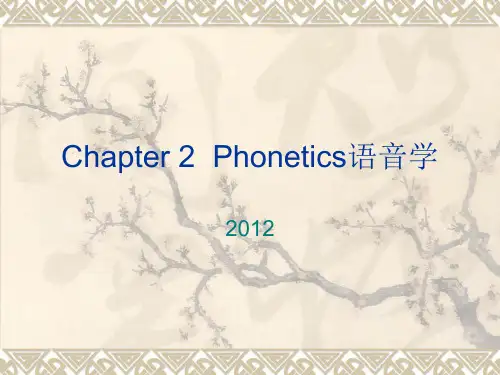

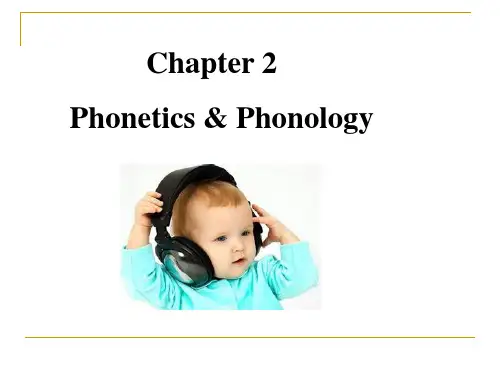
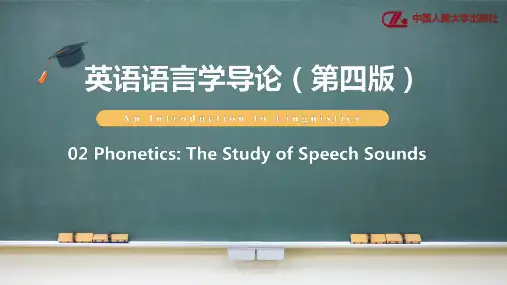
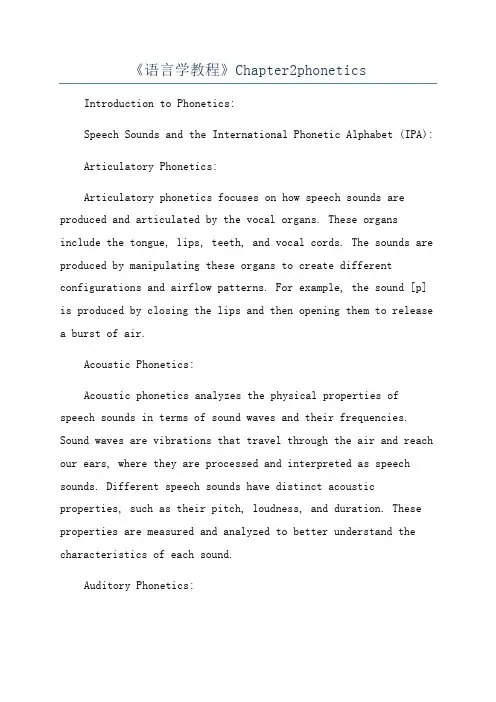
《语言学教程》Chapter2phoneticsIntroduction to Phonetics:Speech Sounds and the International Phonetic Alphabet (IPA): Articulatory Phonetics:Articulatory phonetics focuses on how speech sounds are produced and articulated by the vocal organs. These organs include the tongue, lips, teeth, and vocal cords. The sounds are produced by manipulating these organs to create different configurations and airflow patterns. For example, the sound [p] is produced by closing the lips and then opening them to release a burst of air.Acoustic Phonetics:Acoustic phonetics analyzes the physical properties of speech sounds in terms of sound waves and their frequencies. Sound waves are vibrations that travel through the air and reach our ears, where they are processed and interpreted as speech sounds. Different speech sounds have distinct acoustic properties, such as their pitch, loudness, and duration. These properties are measured and analyzed to better understand the characteristics of each sound.Auditory Phonetics:Auditory phonetics investigates how speech sounds are perceived and processed by the human auditory system. When we hear speech sounds, our ears detect the sound waves and send them to the brain for interpretation. The brain then matches these signals to specific speech sounds and recognizes their meaning. Auditory phonetics explores the mechanisms and processes involved in this perception and interpretation.Segmental and Suprasegmental Features:In linguistics, speech sounds can be classified into two categories: segmental and suprasegmental features. Segmental features pertain to individual sounds or phonemes, while suprasegmental features refer to properties that extend beyond individual sounds, such as stress, intonation, and rhythm. These suprasegmental features contribute to the melody and rhythm of speech and can carry additional meaning and emphasis.Phonetic Transcription:Conclusion:。

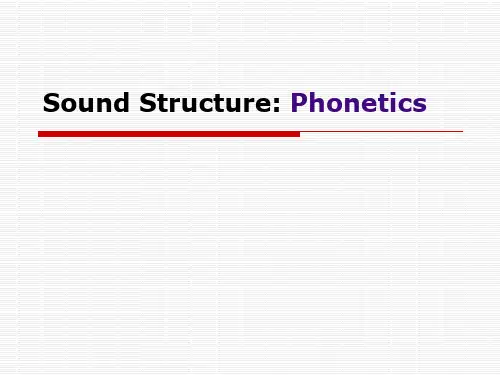
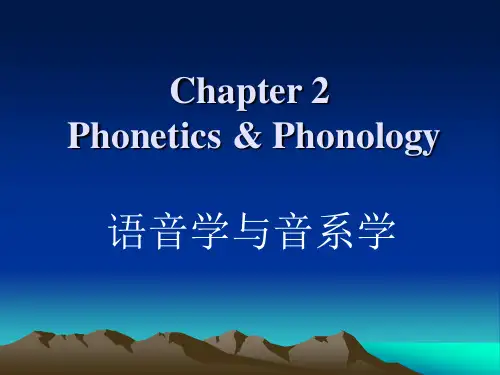
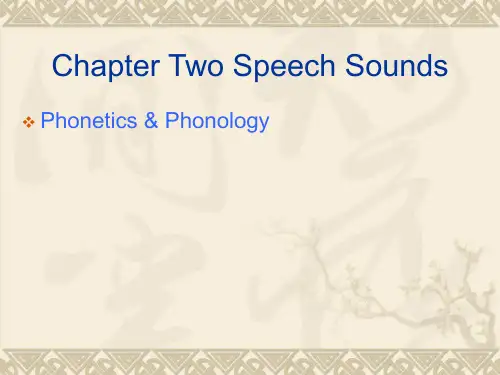

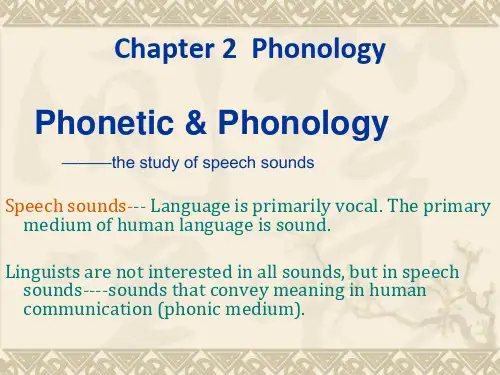
《Summary》特刊语言学第二章总结编辑:孙波任冲校对:汪燕华老师康亮亮一、Phonetics 语音学1、definition:Studies how speech sounds are produced, transmitted, and perceived.研究语音是如何产生,传递和感知。
2、Articulatory Phonetics、Acoustic Phonetics、Perceptual Phonetics发音语言学、声学语言学、感知语言学3、二、Phonology 音系学the study of the sound patterns and sound systems languages 研究语音模式和语音系统三、Voiceless & Voiced Sounds 清音和浊音1、Voiceless sounds:The sounds produced without causing vibration of the vocal cords. 在发音过程中,发音时声带不振动。
2、Voiced sounds:The sounds produced with causing vibration of the vocal cords. 在发音过程中,发音时声带振动。
四、Consonants & vowels 辅音和元音1、Consonants:sounds produced by constricting or obstructing the vocal tract at some places to divert, impede or completely shut off the flow of air in the oral cavity. 发音时,声道的某些部位受到压缩或阻碍后,使得气流在口腔里转向、受阻或完全被阻塞所发出的音。
2、Vowels:sounds produced without obstruction, so no turbulence or a total stopping of the air can be perceived. 发音时,声道不受到任何压缩或阻碍,因此不会有气流的紊乱或停滞所发出的音。